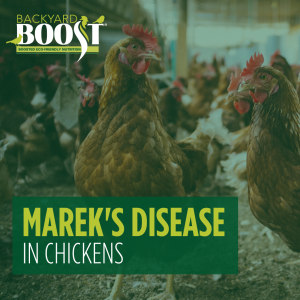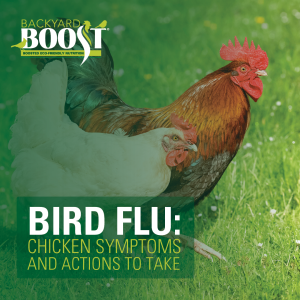
Hen House
We may never know which came first, the chicken or the egg. However, we do know that a happy, healthy hen—not dealing with chicken heat stress—is more likely to be a more productive egg layer. And a more dynamic part of your family!
Nobody enjoys the heat and humidity of the hottest days of summer. Thankfully, many of us can escape to the air conditioning or change into shorts.
But our feathered friends do not have many choices—they have their hen house and their feathers. Fortunately for them, there are steps we can take to ensure their hen house provides comfortable living during the dog days of summer.
Designing a hen house to keep chickens cool is essential to ensuring the health and well-being of your flock, especially during the hot summer months.
Building a Hen House that Won’t Overheat
If you’re trying to create a comfortable, summer-safe hen house, there’s a lot to consider. Here are some factors to keep in mind when planning a comfortable, ventilated hen house for your chickens:
Location & Orientation
Choose a shaded area with good air circulation for your hen house. Avoid placing the coop in direct sunlight or areas prone to heat buildup, such as concrete or asphalt surfaces.
Position the hen house so that it receives natural airflow and prevailing breezes. Orienting the coop to face south or southeast can help maximize ventilation and airflow.
Roof Design
Use light-colored or reflective roofing materials to minimize heat absorption and keep the interior of the coop cooler. Consider installing a pitched or sloped roof to facilitate runoff of rainwater and prevent moisture buildup. You’ll want to prevent moisture buildup to help reduce the amount of humidity that lingers around the coop.
Insulation
Insulate the hen house to help regulate temperature and reduce heat transfer. Use insulation materials such as foam board, reflective insulation or straw bales to provide thermal protection against extreme temperatures.
Ventilation
Ensure adequate ventilation in the hen house to allow for the exchange of fresh air and the removal of excess heat and moisture. Install windows, vents or adjustable openings to promote airflow and cross-ventilation throughout the coop.
Don’t be afraid to add fans to the inside of your hen house. Fans will help circulate air, creating air movement, and will also help cool your hens down all at the same time.
Windows & Doors
Install windows or adjustable vents with wire mesh screens to allow for natural light and airflow while preventing predators from entering the coop. Windows and vents play a big role in the overall ventilation of the hen house.
Provide doors that can be opened or closed to regulate airflow and temperature as needed. As with all doors and windows, it is important that they can be securely closed to keep your chickens safe from nocturnal predators.
Shade & Shelter
Create shaded areas within the hen house using awnings, overhangs or natural vegetation to provide relief from direct sunlight. Incorporate covered or shaded outdoor areas where chickens can seek shelter during hot weather.
Dust Baths
Provide dust bathing areas filled with fine sand or dust for chickens to cool off and maintain their plumage. Dust bathing helps regulate body temperature and remove excess oils and parasites from the feathers.
Cooling Options
Consider installing misters, fans or evaporative cooling systems inside the hen house to help lower temperatures during hot weather. Ensure that any cooling systems are safe for use around chickens and do not pose a risk of injury or electrical hazards.
When it gets excessively hot, freeze water in a water bottle and put that outside in their run for them to roll around and lean up against to help cool themselves. They will like the “toy” and appreciate the cooling-off mechanism as well.
Water Access
Ensure that chickens have access to clean, fresh water at all times to stay hydrated and regulate body temperature. Place waterers in shaded areas and consider using insulated or chilled water containers to keep water cool. Most chickens will stay outside to peck and roam during the daytime, so be sure to have multiple water stations available to them, both inside and outside.
Hot Tip:
During excessive heat waves, give your chickens ice cubes in their fresh afternoon water. You can also freeze pieces of watermelon or berries to give them a “popsicle” that they can peck on to help cool themselves.
Bedding & Flooring
Use bedding materials such as straw, wood shavings or sand that provide insulation and absorb moisture without retaining excessive heat. Avoid using materials that can become hot or uncomfortable for chickens to walk on, such as metal or concrete flooring.
Monitor Temperature
Regularly monitor the temperature inside the hen house using a thermometer or temperature gauge. Take proactive measures to cool the coop, such as providing additional ventilation or shade, if temperatures become too high.
By incorporating these design considerations into your hen house, you can create a comfortable and well-ventilated environment that helps keep your chickens cool and healthy, even during hot summer weather.
Regular maintenance and monitoring of temperature and airflow are essential to ensure optimal conditions for your flock.
When Does Heat Stress Happen in Chickens?
It is important to create a hen house that is comfortable for your girls year-round because heat stress is one of the stressors that impacts your birds’ health and well-being. Additionally, heat stress can impact their laying ability and overall happiness.
Chicken heat stress can occur when environmental temperatures rise to levels that exceed the bird’s ability to disperse heat and regulate body temperature effectively.
Heat stress is a combination of temperature and humidity. The thermoneutral zone is the range of environmental temperatures at which a living being can maintain its body temperature. For most poultry, this zone is between 60 and 75 F. This zone represents the temperature range where heat production is lowest.
As temperatures increase toward 85 degrees F, the birds will adjust their behavior and decrease feed intake and production. These changes help prevent the bird’s core body temperature from increasing. However, mild heat stress starts to occur at about 86 degrees.
Give your Girls a Boost with Backyard Boost®
Every time you give your chickens fresh, clean water don’t forget to add Backyard Boost® Defense to the water. Backyard Boost Defense is a liquid supplement for poultry designed to support digestion and a healthy immune response.
Packed with nutrients needed in times of stress – like heat stress – it also contains AO-Biotics® Amaferm®, a prebiotic research-proven to enhance digestibility. The “green stuff” promotes water intake and hydration.
But Don’t Just Take Our Word for it. . .
Taylor Couch, a chicken raiser and poultry enthusiast with The Farm Stop in Oklahoma, uses and believes in the entire Backyard Boost line. This is what she had to say about the Backyard Boost Defense:
“During this summer, we have noticed a decline in our flock from lighter combs to decreased laying. Backyard Boost® Defense has livened up our flock tremendously, and we have noticed a little pep in their step too! Combined with Backyard Boost Daily Essentials, our flock is performing and feeling its best!”
More about Backyard Boost
Backyard Boost is a line of products purposefully crafted to support the well-being of birds. Two additional products exist in addition to Backyard Boost Defense. All products are powered by the research proven prebiotic Amaferm.
Why does Amaferm matter?
Amaferm is research proven to increase feed efficiency in poultry by 2.29%. That is energy the chickens are expounding to digest or convert feed, and therefore are not heating up internally. They are also using less overall feed and saving you money on chicken feed!
Other Backyard Boost Products
Backyard Boost® Daily Essentials
Backyard Boost Daily Essentials is a pelleted protein supplement for poultry designed to maximize digestibility and egg production. In addition to Amaferm, it contains AO-Biotics® EQE, a postbiotic research-proven to enhance egg quality. Daily Essentials provides nutrients needed for overall well-being.
Backyard Boost® Busy Balls
Backyard Boost Busy Balls are a prebiotic treat to bounce your birds’ boredom. The Busy Balls contain Amaferm, a prebiotic research-proven to enhance digestibility and provide digestive support for overall well-being. They help alleviate boredom, which often leads to undesirable behaviors.
Get Your Backyard Boost Today!
At BackYard Boost, you and your chickens and their health and happiness are the only thing that matters. That’s why we created this educational blog. We hope that you can create or modify your hen house in a way to keep it cool and comfortable for your girls through the heat of summer.
No matter the season, we recommend Backyard Boost for your chickens. But especially during times of stress, like heat stress, we hope you’ll consider Backyard Boost Defense to add to their fresh, clean, cool water.
If you are ready to get your hands on one or all three of these great products to help provide your flock with boosted eco-friendly nutrition, you can order them online or shop one of our online retail partners today.
Do you prefer to shop locally? Find a BioZyme dealer and purchase your Backyard Boost.
Sign Up for Our Newsletter!
Want more useful information about chicken care and health? Sign up for our electronic newsletter.

